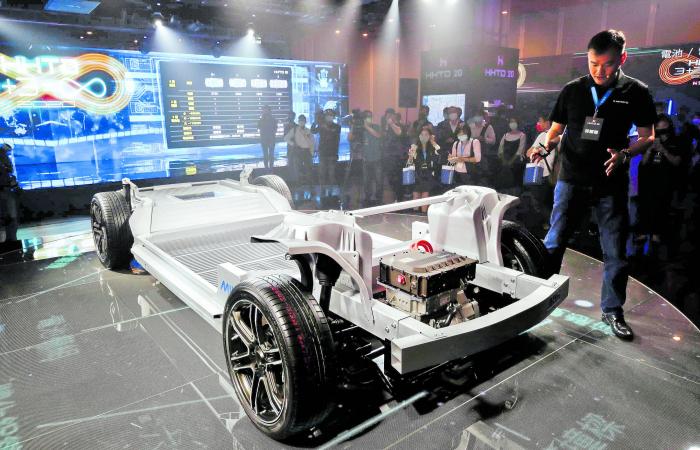A new process makes it cheaper and reduces the pollution and energy needed in the manufacturing of lithium-ion batteries that power electric vehicles.
According to the criteria of
“Manufacturing lithium-ion cathode material requires a lot of energy and water, and produces waste. It has the greatest impact on the environment, especially on the CO2 footprint of the battery,” says Dr. Mark Obrovac, professor of Chemistry and Physics and Atmospheric Sciences at Dalhousie University, author of the study, in a statement.
—–
Photo:RITCHIE B. TONGO. EFE
Most electric vehicle batteries use lithium nickel manganese cobalt oxide (NMC), with the elements mixed into the crystalline structure of the cathode. They are typically made by dissolving the elements in water and then using the crystals that form when the elements join together to form a solid.
That process requires a lot of water (which must then be treated to clean it) and energy, which is the main source of the cost and carbon footprint of batteries. Using the Canadian Light Source (CLS) at the University of Saskatchewan, Obrovac and his team investigated whether they could use a completely dry process to achieve the same results while saving energy, water and money.
His work has been published in two articles, in ACS Omega and in the Journal of the Electrochemical Society.
“We wanted to see if you can get the same quality if you take dry materials and combine them using simple processes that you would find in any large-scale factory and heat them,” he says. “And under what conditions can you do that to obtain commercial quality material and, at the same time, eliminate water and waste,” he explains.
Cathodes made from dry materials are sometimes not as homogeneous as those made from water, so the team tested a variety of methods using different oxides and heating regimes under different temperatures and pressures to determine what worked best.
They used the Brockhouse beamline at CLS to look inside the furnace as they tested these different experiments, to see exactly what was happening during the process.
“What we found was important information on how we can improve the process so that what comes out is a higher quality NMC-type cathode material,” Obrovac says.
The highest quality cathodes available today are made of single crystals with particles approximately 5 microns in diameter.
By carefully adjusting their starting materials and oven conditions, the Obrovac team was able to reproduce those qualities using a completely dry process, making the cathode materials comparable to the best on the market today.
co2.
Photo:EFE
Obrovac has partnered with Nova Scotia-based battery company NOVONIX, which is using completely dry processes to produce cathode materials at the company’s pilot-scale facility in Dartmouth.
That facility is capable of producing 10 tons per year of cathode material, with methods offering an estimated 30% lower capital cost than conventional (wet) methods. 50% lower operating costs and use 25% less energy, without requiring process water and without generating waste.
“These are important figures, it is a big change in the production of these battery materials,” says Obrovac. “It should result in lower-cost batteries overall with a substantially smaller global warming footprint,” he clarifies.







